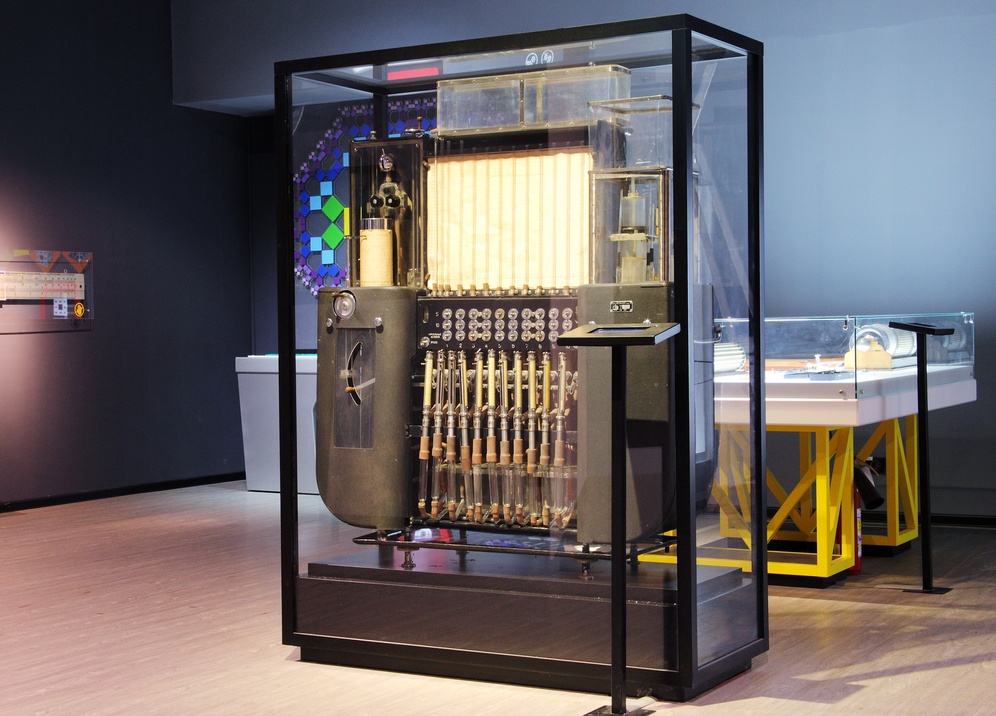Learn why this is the correct answer

While the first computers were mechanical and famously ran on vacuum tubes, there were other schools of thought that brought us a different kind of computer that ran on water. The Russian scientist Vladimir Lukyanov built an analog computer in the 1930s that was called the "Water Integrator" or the "Lukyanov's integrator."
This computer was built to solve partial differential equations. It was particularly useful in calculations for concrete construction, allowing for different materials and climate conditions. The device was not digital, but used water flowing through a series of interconnected tanks, tubes and pumps to perform its calculations. Lukyanov discovered that water flow is in many respects similar in its laws to the distribution of heat, thus by building a computer where the main component was water, he could visualize the invisible thermal process.
Solutions were found by giving a measurement of water in certain tubes (with precision to fractions of a millimeter). The device was originally created to solve problems with cracking concrete, but it went on to inspire systems using the same technology across fields including geology, metallurgy, thermal physics and rocket engineering.
This ingenious system offered practical solutions to manage the varied materials and extreme climatic conditions of Russia. It might seem arcane compared to the silicon-based technologies we know today, but Lukyanov's Water Integrator holds a significant place in the records of computational history. It underscored the adaptability of human invention, using readily available resources to overcome complex challenges.
A water integrator was used in the design of the Karakum Canal in the 1940s, one of the largest irrigation and water supply canals in the world. Also the construction of the Baikal-Amur Mainline in Russia in the 1970s. Water analog computers were used in the Soviet Union until the 1980s for large-scale modelling.
Today the Water Integrator can be viewed at Moscow's Polytechnic Museum.
Image credit: Kramola